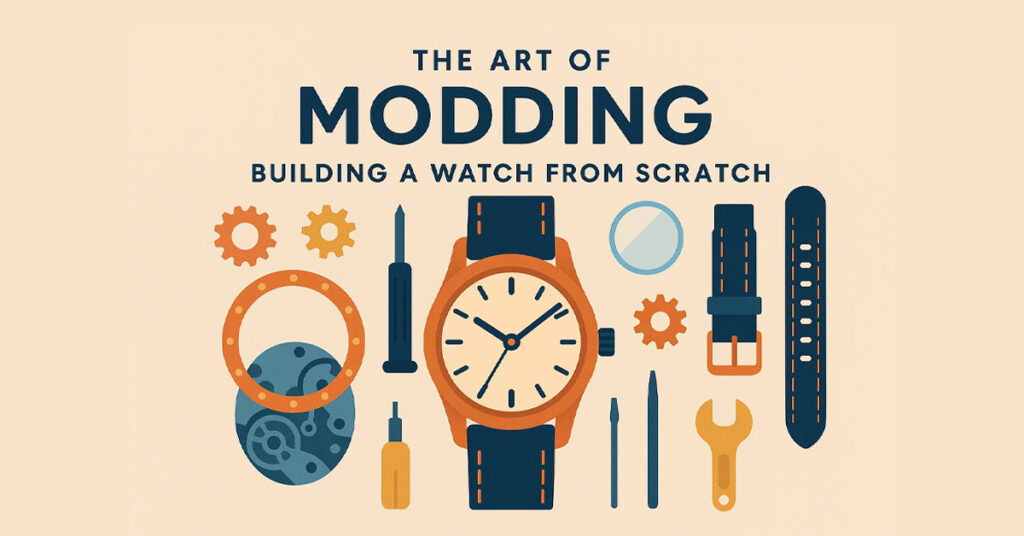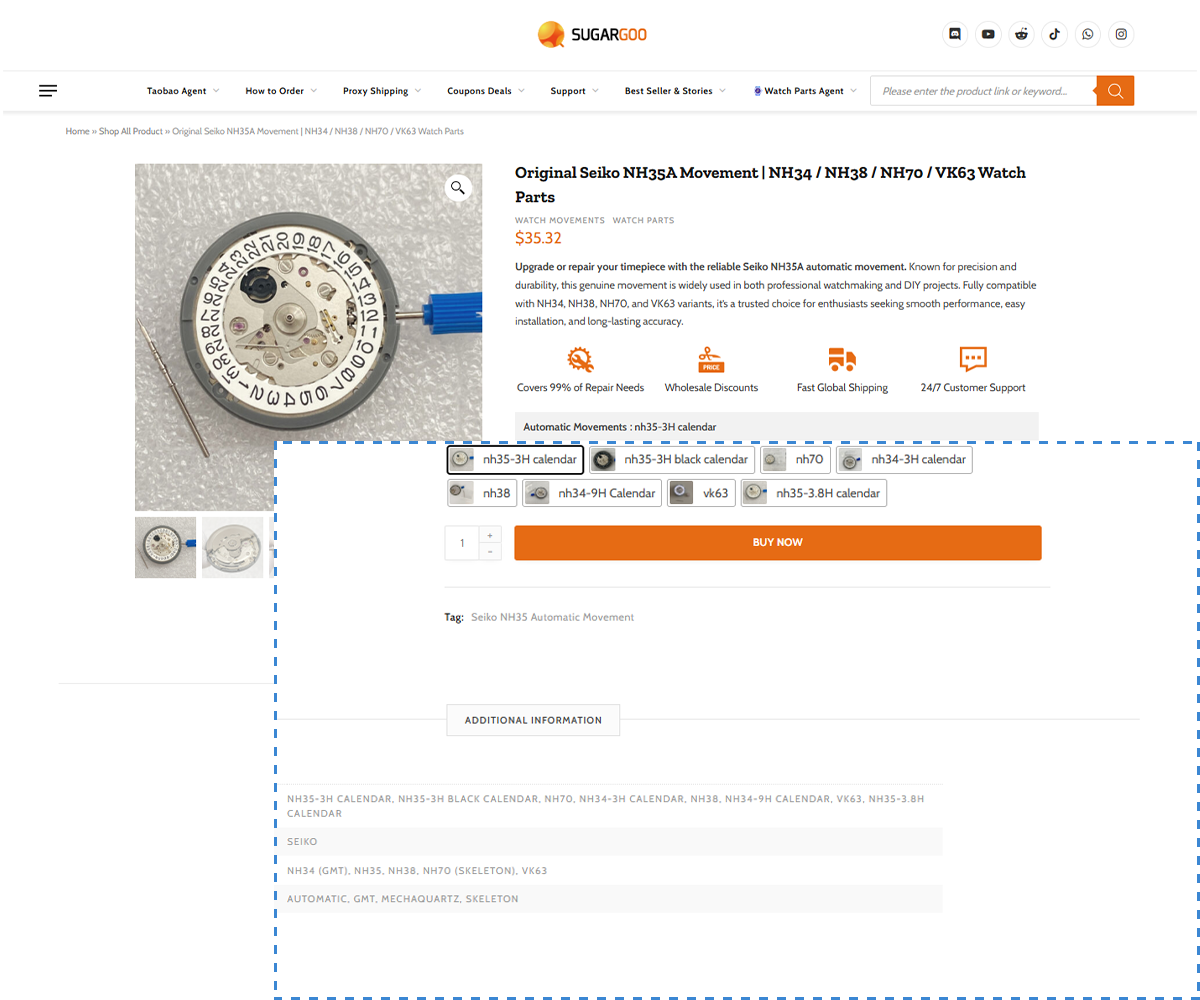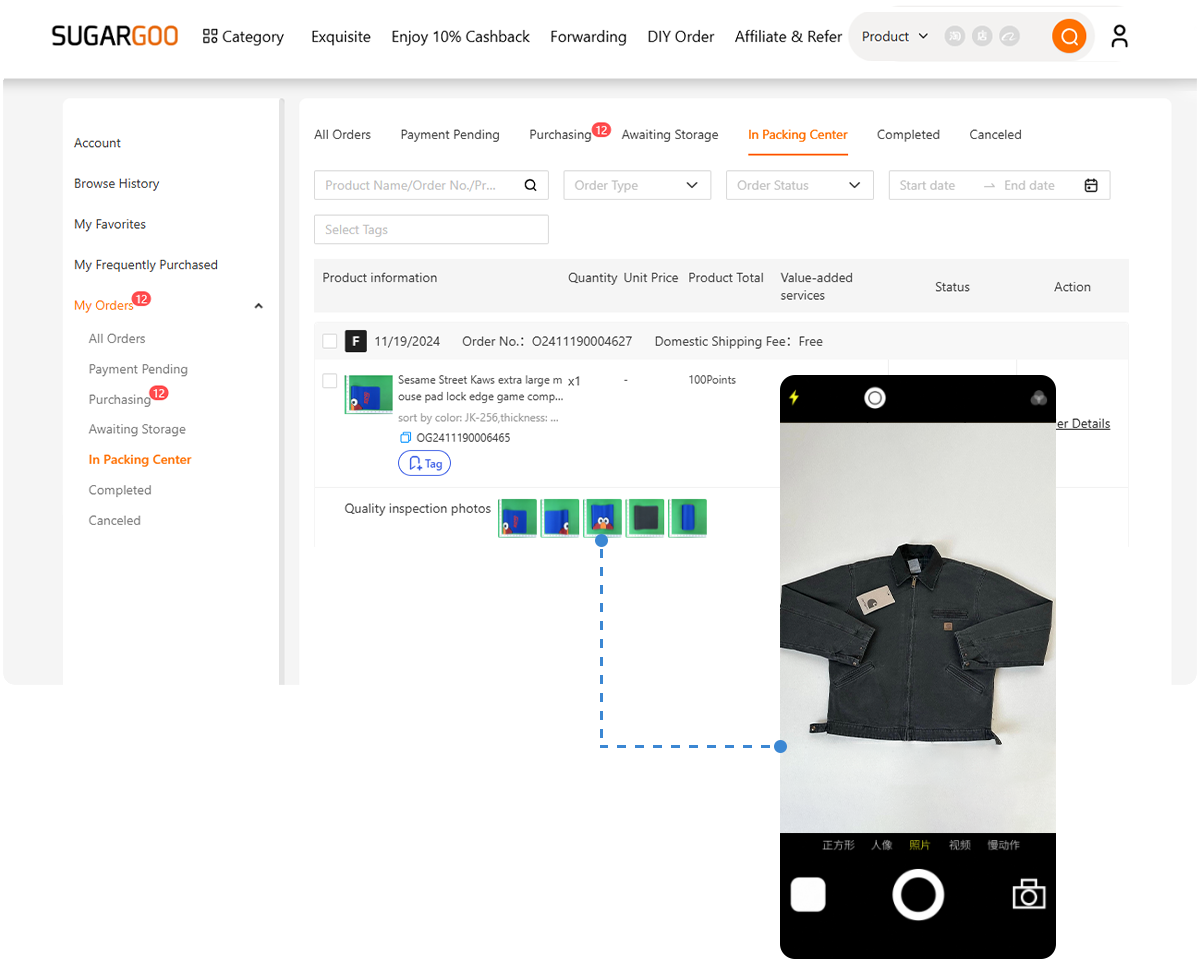“You don’t build a watch to tell time,” the old modder said, “You build one to feel it.”
It was late — a desk lamp flickering over an organized mess: NH35 movements, sapphire crystals, open cases, and the faint smell of machine oil. This wasn’t a factory. It was a small temple for patience.
And that night, under the quiet hum of the fan, I began my first full build. Not a strap change. Not a dial swap. A from-scratch mod — one where every mistake, every breath, every screw meant something.
Chapter 1: The First Rule — You Don’t Build a Watch, You Build Yourself
When you tell someone you’re building a watch from parts, they imagine something clean — pieces snapping together like Lego. It isn’t. It’s chaos.
Tiny screws vanish. Dust floats into places you can’t see. Hands bend, springs fly, and patience leaks out one sigh at a time.
But every modder who’s done it knows this truth: It’s not the watch that’s fragile — it’s you.
Building teaches you how easily frustration replaces focus, how a heartbeat can shake a dial, how a single fingerprint ruins a crystal. The NH35 doesn’t forgive impatience. It forces you to slow down until time itself starts to cooperate.
That’s when the magic begins.
Chapter 2: Choosing the Movement — The Beating Heart
No mod starts without a movement. It’s your watch’s soul, and for most builders, there’s only one first love: the Seiko NH35.
Reliable. Affordable. Mechanical perfection with room to breathe. It’s not just a movement — it’s a teacher. The NH35 doesn’t hide flaws. It reveals them.
I ordered mine through Sugargoo, my go-to Taobao agent for sourcing genuine watch parts. The listings showed photos, balance wheels glimmering under macro lenses. I added a case, dial, hands, strap, and a small watchmaker’s toolkit — all in one consolidated shipment.
When the package arrived, I didn’t open it immediately. I just looked at it, knowing I was holding my own future in a box the size of a sandwich.
Chapter 3: Preparing the Workspace — Respect the Table
The difference between a hobbyist and a craftsman starts with the table. A cluttered desk builds broken watches. A clean table builds calm hands.
Every modder learns this after their first disaster — a dial face-down on a dusty mat, a lost screw rolling off the edge.
So I learned the ritual:
- Bright, diffused light — never direct.
- A lint-free cloth for movement handling.
- Separate trays for hands, screws, and gaskets.
- Gloves, or clean hands and calm breath.
The watch doesn’t care about how skilled you are — it cares about how present you are.
Chapter 4: Fitting the Dial — Where Aesthetics Meet Alignment
The dial is the face of personality. I chose a matte navy dial with gilt indices — minimal, but deep enough to catch light like quiet water.
Installing it was my first real challenge. The dial feet on NH35 movements require perfect pressure. Too much, and they snap. Too little, and the dial tilts, breaking symmetry forever.
Here’s what the old modder taught me: “Never force the dial. Let gravity do the work. Hold the movement flat, let the dial settle. If it resists, it’s not ready.”
Once aligned, it locked in — centered, serene, unshakable. It was the first time I saw something that looked like a real watch.
That feeling — that moment of transformation — is addictive.
Chapter 5: Installing the Hands — The Quietest War
If the dial was balance, the hands were precision. No part tests your nerves more.
A single tremor, a misplaced push, and your hand bends. Bend it once — it’s ruined forever.
I placed the movement on a movement holder, used a loupe, and took a breath.
Hour hand first, pressed flat. Minute next, slightly raised. Second last, floating barely above the dial.
Each push felt like sculpting time itself.
If you’ve never done it, imagine threading a needle with your heartbeat racing — that’s the level of focus it takes.
And yet, when those hands aligned perfectly at 12, everything else in life — stress, noise, emails, deadlines — disappeared.
There was only stillness and motion, at once.
Chapter 6: Casing the Movement — The Moment of No Return
The case I chose was brushed stainless — a modern field style, heavy and unapologetic.
Casing the movement felt ceremonial. You’re placing a living thing into its armor.
I checked the case gasket, applied a thin layer of silicone grease, and lowered the movement. It dropped perfectly — no force, no resistance.
Then came the crown and stem. They clicked into place with that mechanical poetry only Seiko can produce — sharp yet smooth, confident yet humble.
For the first time, I wound the crown. Tick… tick… tick. It was alive.
And that’s when I realized: I hadn’t built a watch — I’d revived something.
Chapter 7: Installing the Crystal and Bezel — Where Imperfection Hides
If the movement is the heart, the crystal is the soul’s window. I chose a sapphire crystal — double-domed, AR-coated, clear as conscience.
Installing it taught me humility. Every speck of dust inside looked ten times larger once sealed. I must’ve opened and cleaned it five times before accepting that “perfect” doesn’t exist — only “sincere effort” does.
The bezel insert went next — black ceramic with gold accents. A tiny detail, but one that tied the dial and case together like rhyme and meter in poetry.
It turned, it clicked, it felt right.
Chapter 8: The Strap — The Bridge Between Metal and Skin
People underestimate how much a strap changes a watch’s identity. Leather softens. Steel commands. Rubber forgives. NATO frees.
I tried several from Sugargoo’s strap selection — a distressed brown leather that whispered vintage, a brushed steel bracelet that demanded attention, and finally, a dark green NATO that just fit.
The strap isn’t decoration. It’s connection. It’s how your craft meets your life — how your work finally touches skin.
Chapter 9: The First Tick on the Wrist
The first time I wore it, I didn’t check the time. I listened. That rhythmic tick was louder than any applause.
In that moment, I understood what my mentor meant when he said, “The first watch you build isn’t for wearing — it’s for understanding.”
Because the tick isn’t just mechanical. It’s the echo of all the small things you did right — and all the things you didn’t.
Every dust speck, every reinstallation, every bent hand, every aligned screw — it’s all there, ticking.
That’s what makes modding art.
Chapter 10: What Building a Watch Teaches You
Building a watch from scratch isn’t about perfection. It’s about rhythm — the rhythm between effort and patience.
It teaches you that tools matter — a spring bar tool saves scratches. It teaches you that precision isn’t pressure — it’s alignment. It teaches you that every mistake is a lesson waiting for a slower hand.
And most importantly, it teaches you that time isn’t something you watch — it’s something you build.
Because once you’ve assembled a timepiece yourself, you’ll never see “hours” and “minutes” the same way again. You’ll see craftsmanship, humility, and life — turning one click at a time.
Chapter 11: When It All Goes Wrong (And It Will)
No matter how careful you are, you’ll make mistakes. Dust will sneak under your crystal. A screw will strip. A hand will bend.
That’s not failure — it’s initiation.
You’ll learn to replace crystals, polish bezels, and fix crowns. You’ll discover forums, guides, and other modders who’ve made the exact same mistakes. You’ll realize you’re part of something bigger — a global rhythm of builders who quietly bring precision into a chaotic world.
And when your watch finally runs again, you’ll smile — not because it’s perfect, but because you are different.
Chapter 12: Tools, Parts, and Where Real Builders Source
Real builders don’t buy random parts off the internet. They build ecosystems.
That’s why Sugargoo became the backbone of my modding journey. It’s not just a Taobao agent — it’s a gateway to everything rare and real.
Through Sugargoo, you can:
- Order NH35 and NH36 movements from verified Seiko-part suppliers.
- Combine cases, crystals, dials, and straps in one shipment.
- Request QC photos for quality assurance.
- Access small-batch custom parts no global platform offers.
The best part? It’s transparent — you see what you buy, you know who made it. That kind of trust is rare in modding.
Register here and you’ll understand why so many builders quietly depend on it.
Chapter 13: The Philosophy of Creation
Once you’ve built one, you start to notice things — not just in watches, but in life. You learn how patience feels. You learn how silence sounds. You learn that control isn’t force — it’s flow.
And you realize something simple yet profound: The art of modding isn’t about watches. It’s about attention.
Every turn of a screw, every alignment of a hand, every clean gasket — it’s an act of mindfulness disguised as engineering. And every tick that follows is a reminder that your effort became motion.
That’s art. That’s time. That’s you.










